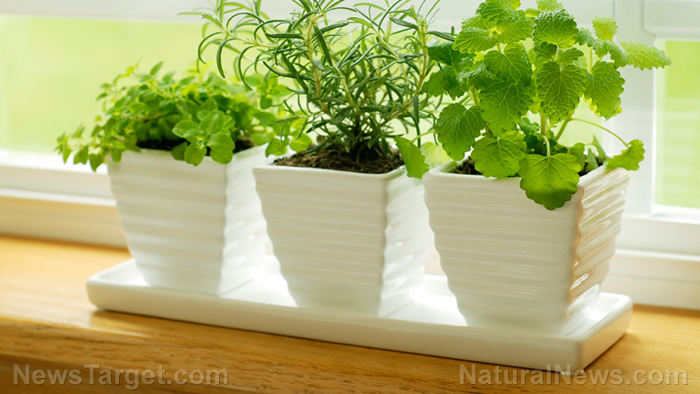
Growing space
The first step is to determine where you're doing the planting. Select a space where heat and humidity levels and the amount of natural light that falls into it are just right. A window ledge space is one of your better options for this.
Planters
Using planters in a variety of sizes is an effective strategy to maximize limited space as they can be worked around like puzzle pieces. Go completely green and reuse old containers, like cottage cheese containers, peanut butter jars, plastic buckets and coffee cans. Be sure to poke drainage holes into your indoor garden planters to drain excess water.
Soil
Indoor plants thrive in well-draining and nutrient-rich soil. Use quality compost and the soil from your outdoor plots. The drawback, however, is that these may attract more pests. Though plants are generally safer indoors, insects like whiteflies can still attack your crops. You can try using organic pest control methods like placing trap crops and companion planting to minimize pests.
Grow lights
Though a window-side growing space will afford you natural sunlight, you will still need artificial lighting to see your plants through during the winter months.
The optimal light for growing vegetables has a color temperature of 6,400 Kelvins. Buy only grow lights as these are specifically designed to be used for plants. Also, make sure you're buying lights with an adjustable stem so you can freely adjust the lighting as your vegetables grow. The lights should be positioned about 24 inches above most crops when they are seeds or young plants.
Depending upon the plant being grown, most plants will typically require between eight to 10 or 14 hours of either natural sunlight or artificial sunlight per day. If a plant is pale and has a thin stem and small leaves, it is likely not getting the amount of sunlight it needs.
Temperature
Maintaining temperatures is essential to winter indoor gardening. Some plants like basil are sensitive to temperature changes while others like garlic, potatoes, kale, onions, beets and carrots are far hardier.
For best results, keep the room temperature between 65 and 75 degrees. A change of 10 degrees in either direction can harm plant growth or even kill some plants. A plant that has grown unusually tall and spindly or short has likely been exposed to too much heat and not enough humidity. Meanwhile, a plant with yellow and drooping leaves has been exposed to chilly temperatures. (Related: Home gardening basics: 24 Plants to grow in a bucket garden)
Humidity
Infuse moisture in the air using the following tips:
- Place a kettle or pot of water on your wood cookstove.
- Place a pie pan with lava rocks or bricks on the indoor winter garden table.
- Put the plants close together to trap and house moisture.
- Spritz the plants daily from top to bottom so the water on the plant would evaporate into moisture later on.
- Use a humidifier.
You can tell if your room is not humid enough when your plants are browning, shedding leaves or have a shriveled look.
Ventilation
Plants also require proper airflow to flourish. Maintain a steady airflow so the room does not get “stuffy.” You can turn on a small fan to add extra ventilation during winter.
Watering
Indoor crops require frequent watering as they dry out more easily than ground or outdoor plants. Touch the soil on a daily basis to determine if it feels dry, moist or overly wet. Telltale signs of overwatering include plant discoloration, wilting foliage and stunted growth. Meanwhile, signs of underwatering include brown or discolored leaves, dry soil and the shedding of flowers or leaves.
Growing your own food indoors requires work but it's much easier than it seems at first glance. Use this guide to get yourself started with indoor home gardening.
Sources include:
Please contact us for more information.























